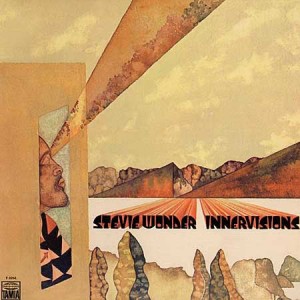Smarter in Sixty Seconds: Don’t Hesitate, Collaborate
Yeah, I was late to the party on this one, I admit. I had been hearing the hit song all over the radio. But it was that voice that caught my ear; raspy, soulful, full of grit and emotion. It reminded me of something different, not a product. Something real; something I haven’t heard in a very long time. Passion. Vulnerability. A true artist.
Her name is Adele (but you knew that). I had heard Rick Rubin was involved. We know he doesn’t mess around with half-talents. She was probably good. Still I didn’t buy it. Not until I heard the oft-quoted music blogger, Bob Lefsetz, raving about her. I figured if Bob was gushing like that, it might be worth checking out. We only seem to find cool stuff these days when a trusted source turns us on.
And the album — 21 — is killer! Something you actually need to hear start to finish. It’s an instant classic. You don’t channel surf this one. I mean, you could, but you miss the story she tells: the hurt, the loss, the struggle of dealing with a broken heart from someone you’re crazy in love with who dumped you. This is not about working a single. You feel what she’s been through. We’ve all been there. No hype. She is the anti-Gaga.
And there’s this great black and white shot on the album of Adele and her crew working together in a funky home studio setting. It points to something intrinsically missing in much of DIY music culture today; essential if you want to make a truly great record. It’s a very ancient human endeavor known as collaboration. As in being in the same physical space with other human beings co-creating. It’s how magic happens.
And look what happens when you put a true talent like Adele together with a studio full of equal or greater talent in all the other chairs? The producers, the musicians, the engineers? You get “21”. Isn’t that how great records used to get made? Some things will never change.
It Got Me Thinking
What does it take to create a body of work so truly outstanding that it becomes timeless, essential? Something that ricochets around the world and gets passed down through the generations to become ubiquitous? You know, that desert island record everyone’s always asking you about on Facebook?
Yeah, that’s a bitch to try and nail down; that one record you would listen to for the rest of your life but there’s certainly no shortage of candidates that come immediately to my mind.
Is it Abbey Road? Or Kind Of Blue or Highway 61 Revisited or What’s Going On or Innervisions or Led Zeppelin II or Thriller or Are You Experienced? Or A Love Supreme or Joshua Tree or Dark Side Of The Moon? (And yes, I left out a sizable stack of favorite blues and soul albums along with a few artists, Muddy Waters, Robert Johnson, Jeff Beck, Chuck Berry, James Brown, Sly, Ray Charles, Aretha, Frank (Sinatra and Zappa), Ella, Dizzy, Bird, The Doors, The Who, The Stones, Cream, Van Halen, Talking Heads, Prince, Guns & Roses, Nirvana…I know. But you get the idea.
But here’s the thing. How come I can’t seem to identify even one potential candidate that was produced in the age of the Internet, after the invention of Napster, MySpace, or Facebook? The birth of DIY culture?
Sure, there have been some great internet success stories: cool artists who have utilized the technology to connect and interact with their core audiences in really unique and creative ways to build a real following and new models for a sustainable career making music. (And hey, I’m still as DIY as the next indie artist. Once upon a time, back in those halcyon Napster days, I had an indie band called Fire Ants, who had a Number One on MP3.com and got interviewed by CNN, Rolling Stone and Wired Magazine, all on a PR budget of zilch. So yes, I get it. The Internet works.)
And artists have tools available today that simply would have been thought impossible not even a few years ago. So, to that end, it’s never been a better time to be an independent artist.
Where Are the Giants?
Well, maybe the answer lies in the initials themselves: D.I.Y. (Do It Yourself).
Many of those aforementioned artists toiled away in obscurity for years before getting their big break just to make their first record. Before finding their groove, their true voice. They put in their 10,000 hours. Because that’s all there was if you wanted to be heard by a lot of people: the Holy Grail, the record deal. You needed radio. You needed the worldwide distribution. And you had to be really good.
Yet after slugging it out and ultimately becoming some of the most iconic artists of our modern era, none of those classic albums were created by artists tinkering away alone in their bedrooms. Far from it. It was a collaborative effort.
One of my absolute top contenders for that coveted desert island spot is Innervisions by Stevie Wonder. That’s the one with songs like “Living For The City”, “Higher Ground,” “Too High,” “All is Fair in Love,” and “Golden Lady.” It is pure, inspired magic from start to finish. And while others might argue for a half dozen other Stevie Wonder albums, no less inspiring, most people would agree that his talent is immense. His body of work profound. And he didn’t do it alone.
Collaboration: There are no less than 24 people credited with the making of Innervisions. 24 highly experienced professionals, experts each in their own specific field of discipline, with their own impressive credentials, contributing to this amazing work. Musicians, engineers, producers, A&R people, photographers, graphic artists, liner notes writers and so on, all coming together and pooling their talents in a collaborative effort.
For example, there’s Dan Barbiero, one of the credited engineers. He worked not only with Stevie Wonder but John Lennon on Mind Games, Eric Clapton, Johnny Winter. Then there’s Gary Olazabel, merely the tape operator on this album. His engineering credits went on to span most of Stevie Wonder’s recorded efforts, along with Rufus and Chaka Khan, The Isley Brothers, Michael Jackson, Stevie Ray Vaughn, Billy Preston, and many, many more.
Then take just one of the many credited musicians; Willie Weeks, an incredible bass player. Just a very partial discography of legendary artists he has played with include B.B. King, The Rolling Stones, Stevie Winwood, Aretha Franklin, George Harrison, The Doobie Brothers, John Mayer and a few hundred other artists you’ve also heard of.
Now take all those high level professional credits; all that talent and experience co-creating with an amazing artist and ask yourself if you think that may have something to do with the end result being a masterpiece that endures nearly forty years later?
Other examples:
Abbey Road? (20 album credits)
Dark Side Of The Moon? (23)
Thriller? (56!!!) For God’s sakes, just Google Quincy Jones alone if you actually don’t know who he is and plan to spend a few hours learning about what he brought to Michael’s table.
Just Try and DIY
Now let’s take a look at a typical DIY artist today making records. (I’m guessing if you’re reading this, you either are this person or know someone who fits the description.) Maybe they’re an individual, maybe a band member. They probably play at least one instrument. Maybe they can sing too. Maybe they tour. Maybe they’re just alone in a bedroom.
Maybe they know a producer who has one or themselves own a computer armed with one of the many recording softwares available (Pro Tools, Logic, Garage Band, etc.) along with enough drum loops, samples, plugins and virtual instruments to create pretty much anything from a symphony to a rock opera to deep house tracks; all the tools to create a totally professional studio quality record, right?
Except for one thing: contrary to popular opinion, you still can’t do it all yourself. Not true greatness, that is. Even with all this technology.
Seriously, you don’t get to be an amazing songwriter, prodigy musician, awesome singer, dynamic performer, producer, arranger, incredible recording, mix and mastering engineer, video editor, graphic artist, PR person, literary writer. Any one of those would take a lifetime to master. Just because you have every imaginable tool at your fingertips doesn’t mean you’re the master of any of them.
Yet most DIY artists today often find themselves wearing all or most of those hats on any given day, don’t they? And what do you think the end result of all that jack-of-all-trades, master of none DIY multi-tasking is going to be? (the majority, not the exceptions) The answer is that the music suffers.
Yes, the world is your oyster right now as an independent artist. The problem is, it’s everybody else’s oyster too; bloggers, podcasters, painters, photographers, quilters, authors, tech geeks, foodies, fashionistas, and the new vacuum cleaner salesmen of the digital era, the SEO internet marketing firms…noise, noise, noise!!! (In the immortal words of The Grinch.)
The “Best” Solution
But what if it were different? What if there really was a way to rise above the noise and be heard? (Isn’t this what every artist wants after all?) You really only have one choice as an independent artist today if you want to get noticed: You simply have to become the best there is. Not the best in the world. The best YOU, that is, that you can possibly be. The more eclectic and original, the better.
Who cares if it’s a few or many who find and support you in your chosen niche, your tribe. Serve them, not your own self interests. Feed them greatness. They are hungry, starving actually. If it’s truly great, they’ll eat it up and come back again and again, if you keep your end of the bargain and stay authentic. And they’ll spread the word too. But you have to realize if you want to be remarkable, you can’t do it yourself. You’re going to need help to shine your brightest light. You have to collaborate.
With the downsizing of the music industry, there are a lot of very talented creatives floating around right now who don’t have those fat record company gigs anymore. They’re looking for work and have a wealth of knowledge and experience; writers, producers, arrangers, top flight musicians, engineers, mixers, A&R people, art directors. These are people who were around when the big money was flowing in the biz and they were there to help put the polish on the careers of many of the big name artists you know and like you, they’re hungry now too. And most still need to work.
Couple that with the current social networking climate and you now have the ability to reach out and connect with these people. They have Facebook pages now. They want to connect to the future too. You can do your diligence and find out the people who worked with the artists you identify with. You can seek out their expertise, invite them to collaborate. You might be surprised who responds.
A couple years back I saw one of the true greats of pop songwriting, Jimmy Webb, give a lecture on his craft down at NYU. He wrote songs my parents loved, “MacArther Park”, “Galveston,” “Up, Up and Away” and so many more. He is legendary. If you were born when Nirvana was still touring you might not know the name but trust me on this one. I thought someone like that could help me improve as a songwriter, so I went to his website, wrote to him and asked if he would consider mentoring me on my songwriting. He wrote me back and said he was really busy but agreed he would on a limited basis. How cool is that?
You can decide right now you want to be the best YOU that you can be and ask others with more experience in those areas you may be winging it to help you to shine. To help you tell your greatest story. To take you much further than you could ever go by yourself.
And something else; ask someone you know who has ever worked in a collaborative environment with some serious cats and ask them how that experience was for them. They’ll probably say it was awesome to watch the pros make them sound and look better.
Yeah, it’s very cool that technology has given us all the tools we need today to take charge of our own destiny. You can do it yourself. But it’s way cooler when we do it together.
Give it a try…shine a brighter light.
Peace,
Mark Hermann
NYC-based producer/artist/engineer/more Mark Hermann spends his life in the professional service of music. He has toured the world with rock legends, produced hit artists, and licensed music for numerous TV/film placements. Hermann also owns a recording studio in a 100-year old Harlem Brownstone. Keep up with him at his homepage.
Please note: When you buy products through links on this page, we may earn an affiliate commission.










Mockingtheindustry
June 16, 2011 at 6:54 pm (14 years ago)Great point of view and challenging advice. Good Stuff.
Mockingtheindustry
June 16, 2011 at 6:54 pm (14 years ago)Great point of view and challenging advice. Good Stuff.
Mike
June 16, 2011 at 7:16 pm (14 years ago)brilliant and SO true!!!!!